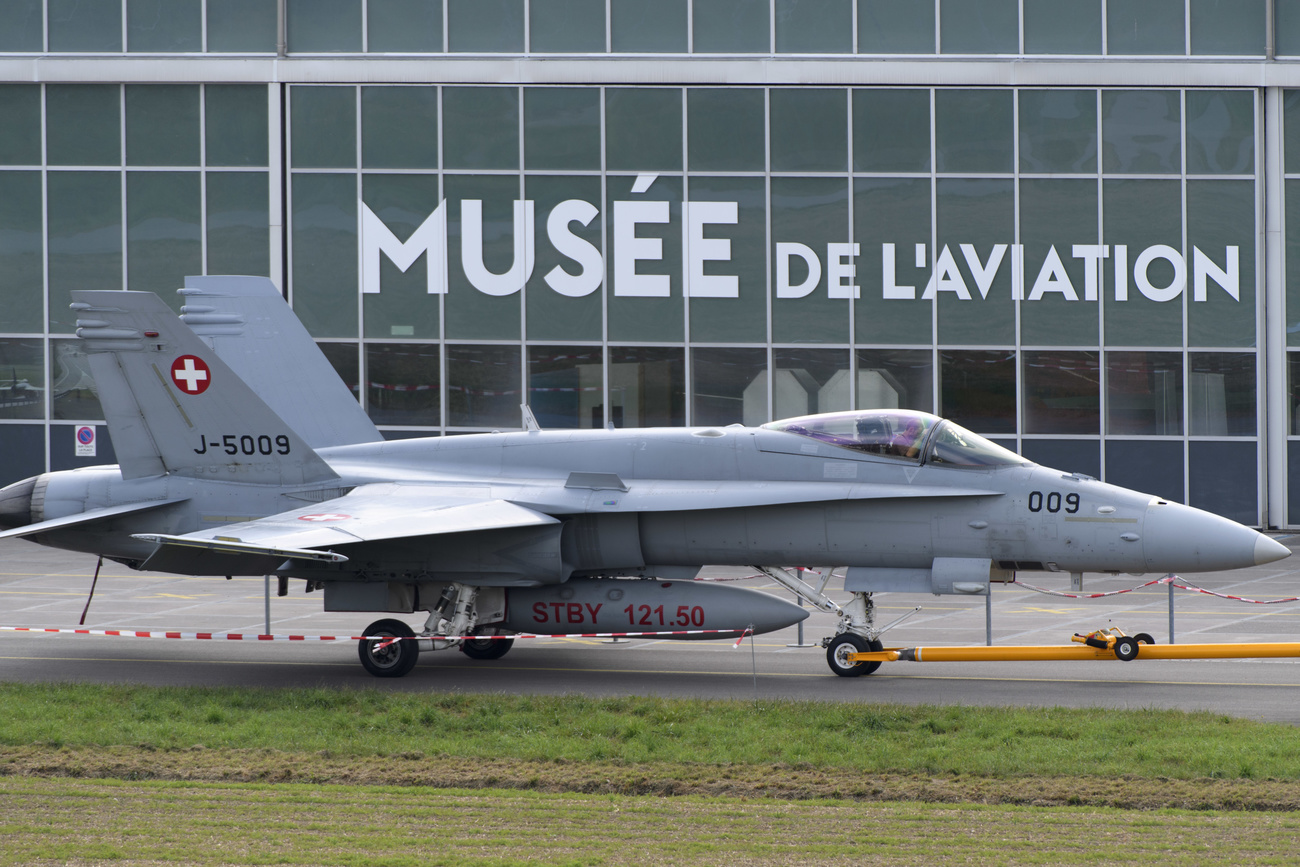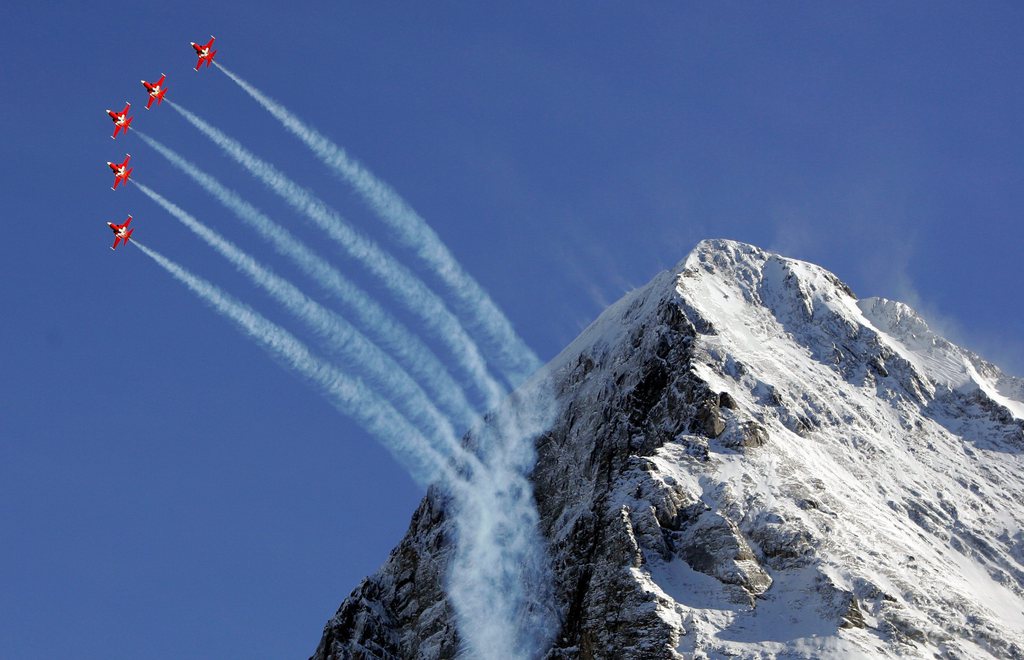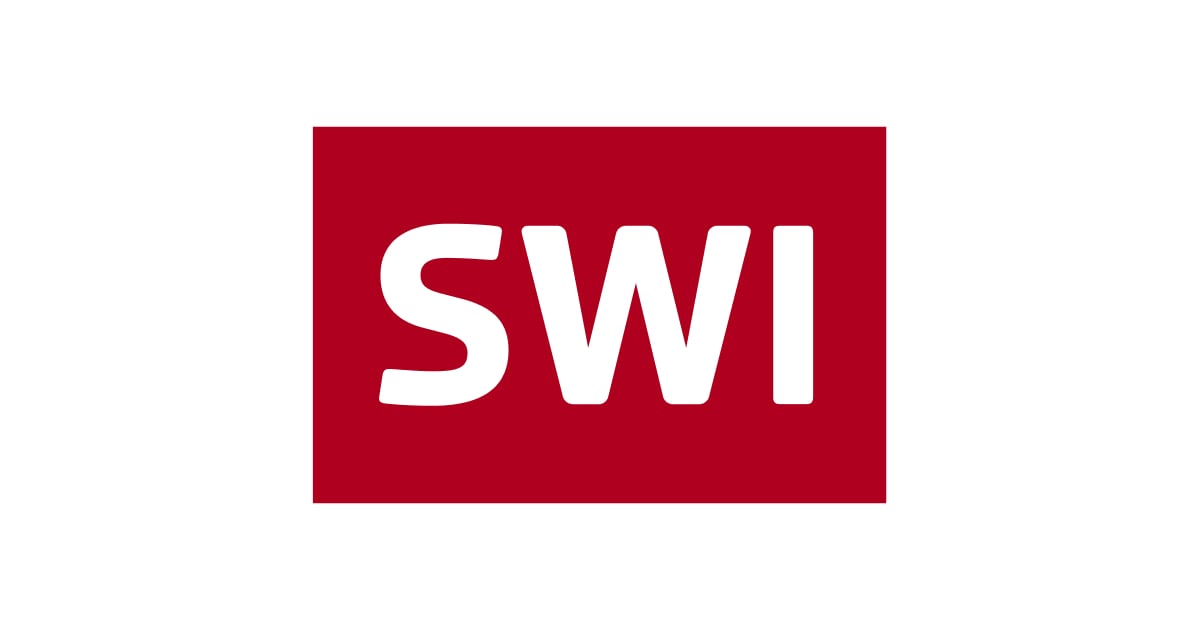
Swiss voters hold the keys to new fighter jet fleet

The air force’s CHF6 billion ($6.4 billion) purchase of new fighter jets has been challenged to a referendum by pacifists and left-wing political parties.
Parliament has given its approval for the government-backed plans to boost and modernise Switzerland’s air defenceExternal link capabilities. It is the third nationwide vote in almost 30 years about the acquisition of new military aircraft for the Swiss air force.
Voters will decide on the credit package alongside four other issues on September 27.
What’s at stake?
The latest attempt to modernise Switzerland’s air defence, including its fleet of F-5 Tiger aircraft and the F/A-18 jets, was initiated by the government four years ago.
A majority of parliament approved the CHF6 billion credit to purchase up to 40 fighter jets by 2030, with the type of aircraft to be decided by the government at a later stage. Bids by four companies from the United States, France and Germany have been shortlisted.
As part of the package, the Swiss export industry is to benefit from a so-called offset agreement – a compensatory system that means foreign companies involved in the armament deal place orders with Swiss firms worth 60% of the contract value.
Why do voters have a say?
The pacifist Switzerland without an Army group collected enough signatures to force a referendum vote against the credit package.
The campaigners handed in about 66,000 signatures in June 2020, following a decision by parliament last December.
As part of the Swiss system of direct democracy, a parliamentary decision can be challenged to a nationwide vote by collecting at least 50,000 signatures within 100 days.
More
What are the main arguments for and against?
OpponentsExternal link categorically reject the purchase of new aircraft, saying it is unnecessary and a waste of resources. They argue it makes more sense to use the funds for disaster relief, health, climate projects, public transport, old age pensions or education.
They argue that Switzerland can police its airspace with cheaper jets which would also cause less damage to the environment.
Campaigners have also warned that the government is downplaying the real costs for the new aircraft. When maintenance and other costs are accounted for, the bill will amount to CHF24 billion rather than CHF6, opponents say.
However, supporters of the project argue that neutral Switzerland needs to modernize its air force fleet to keep up a credible self-defence system and to remain independent from other countries.
The current fleet – with F-5 Tigers and F/A-18 Hornets as its backbone – would no longer be credible, and increasing the number of helicopters or drones is not a valid option, they say.
The supporters also say the CHF6 billion come from funds destined for the armed forces and must not be spent on other government projects.
Who are the supporters and the opponents?
The opposition camp includes the two main left-wing parties (Social Democrats and Greens), the environmental Greenpeace organisation as well as pacifist groups.
They face a broad alliance of all other major parties from the centre to the right of the political spectrum, the business community and various militia army groups. The government and parliament are also in favour of the acquisition.
What’s the controversy about the air force?
The Swiss air force was established in 1914 and the costs associated with buying new aircraft has often been the subject of controversies.
So far, voters had the final say on two occasions. In 1993 they endorsed the purchase of the current F/A-18 fleet, throwing out an initiative by the left.
However, voters dealt a blow to the government in 2014 by rejecting the purchase of 22 Gripen fighter jets from Sweden’s Saab company for CHF3.1 billion.
Issues related to the Swiss armed forces and exports of war materiel have regularly featured ballot papers over the past 30 years.
Most proposals by pacifist groups and left-wing parties failed to win the support of voters.
However, the 1989 initiative calling for the abolition of the Swiss armed forces went down in history as more than 35% of voters supported the pacifist proposal. It was seen as a major upset for the political establishment and helped speed up military reforms following the end of the Cold War period between the western nations and the Communist eastern bloc.
Two more initiatives are due to be put to Swiss voters in the next few years. They seek to introduce a ban on arms exports and to outlaw the funding of weapons producers worldwide.

More
Swiss Air Force: the logbook

In compliance with the JTI standards
More: SWI swissinfo.ch certified by the Journalism Trust Initiative






























You can find an overview of ongoing debates with our journalists here . Please join us!
If you want to start a conversation about a topic raised in this article or want to report factual errors, email us at english@swissinfo.ch.